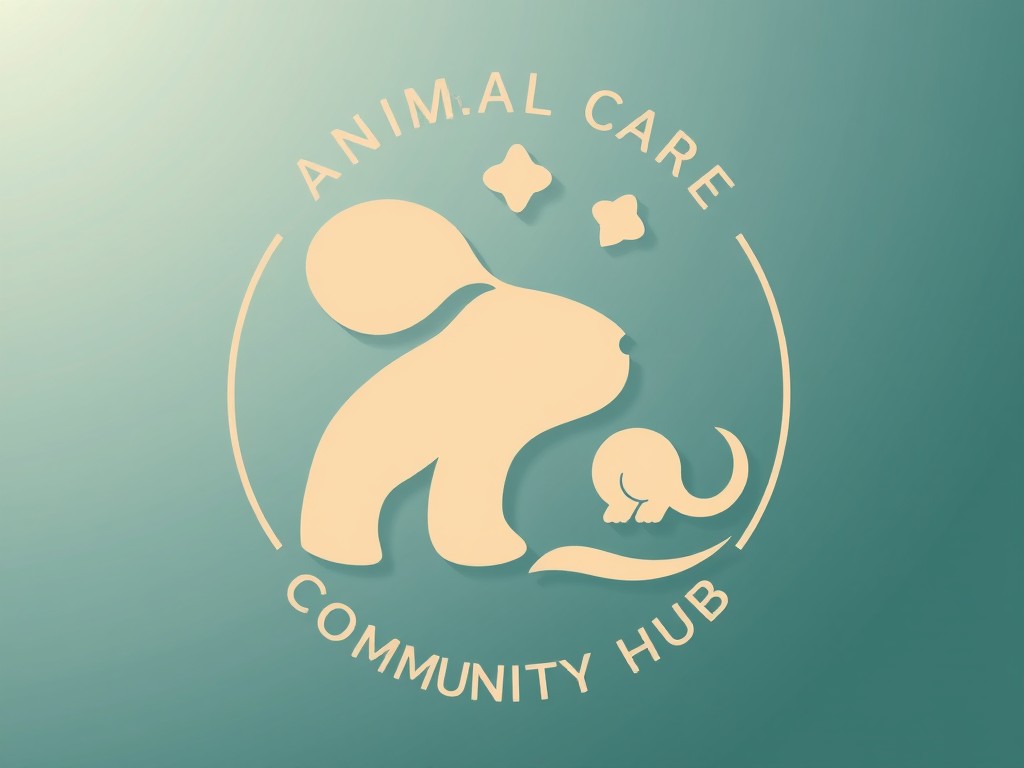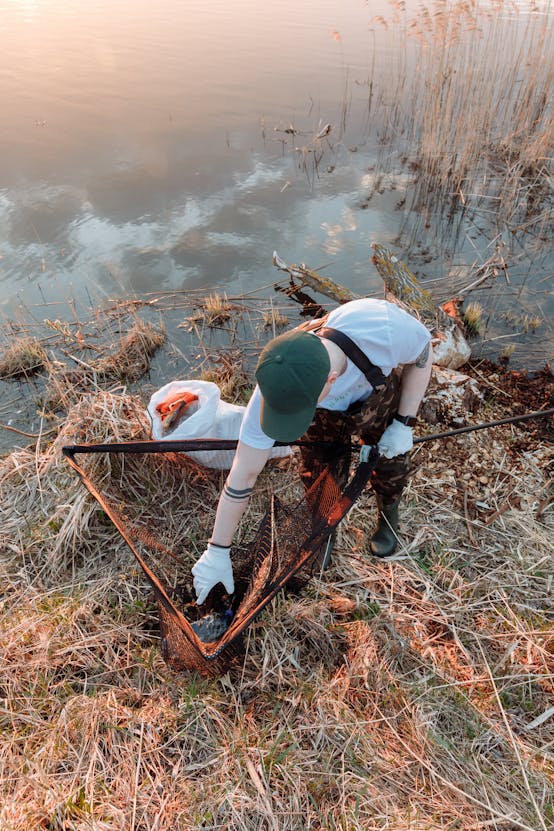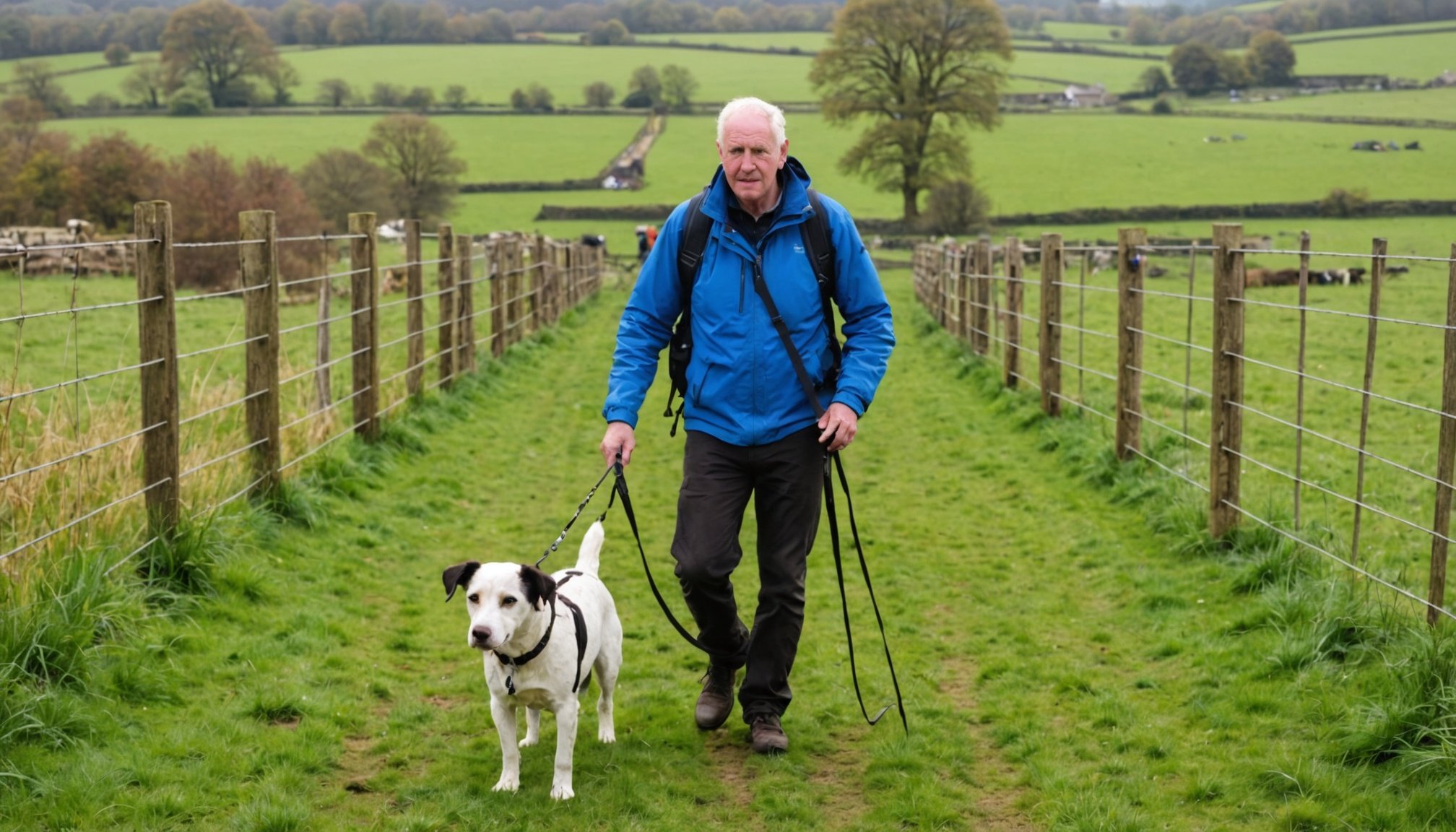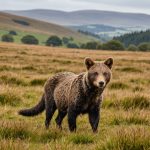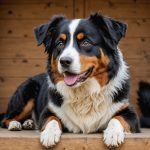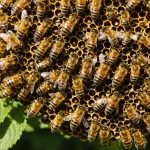Identifying the Hazards of Dog Walking Near Farm Animals
Dog walking in rural England often involves navigating close proximity to farm animals. Understanding the dog walking hazards around these creatures is critically important for the safety of both dogs and their owners.
In rural areas, common farm animals encountered include cows, sheep, and horses. These animals might appear benign, but their interactions with dogs can be unpredictable. Cows, for instance, may display aggressive behaviours such as charging or kicking, particularly if they feel threatened or protective of their calves. Sheep, while generally more timid, can become agitated if herded by an unfamiliar dog. Horses might exhibit defensive actions including stomping or biting when they feel cornered or stressed.
Avez-vous vu cela : Essential Tips for Establishing a Thriving Beehive in Your Urban UK Garden
There are significant health risks to consider as well. Livestock can carry diseases, some of which may be transmissible to dogs, such as leptospirosis. Furthermore, grazing areas often have biosecurity measures which, if breached by a dog, could lead to disease spread among farm animals. To ensure farm animal safety and minimise these risks, it’s crucial for dog owners to maintain control over their pets and adhere to local countryside codes. Understanding these hazards can significantly reduce incidents and promote safety.
Disease Transmission Concerns
When considering zoonotic diseases, it is crucial to understand the health risks posed to both dogs and humans. These diseases can transfer between animals and humans, often through close contact or shared environments. Dogs, often close companions to humans, can act as carriers or victims of such illnesses, impacting both their health and that of their owners.
A lire également : Identifying Stress in British Reptiles: Signs to Watch For and Effective Relief Strategies
Common transmission routes from farm animals to dogs include direct contact or indirect exposure through contaminated surfaces and foods. Livestock, such as cattle or poultry, frequently host pathogens that may affect dogs. Notable animal diseases encompass Salmonellosis, Leptospirosis, and Brucellosis. These can be easily transferred if a dog comes into contact with contaminated feces or water.
Monitoring for signs of illness in dogs post-exposure is vital. Symptoms may manifest as lethargy, vomiting, diarrhoea, or fever. Dogs may exhibit a noticeable change in behavior or physical condition after interacting with farm environments. Taking prompt action by consulting a veterinarian ensures early detection and treatment, safeguarding both the dog’s health and the household.
Understanding and implementing preventative measures can significantly reduce the risk, proving beneficial not only for the dog’s wellbeing but also for human companions.
Legal Implications of Walking Dogs Near Farm Animals
When walking dogs in rural areas, it’s crucial for dog owners to be aware of their responsibilities under UK law. The legal rights of farmers are reinforced by specific dog control regulations aimed at protecting farm animals. Central to understanding these laws is the Animals Act 1971, which outlines the liabilities of dog owners whose pets cause damage or harm.
Dog attacks on farm animals, such as sheep, can lead to severe legal repercussions for dog owners. According to farm animal protection laws, owners are liable for any damage caused. This means they could face fines and be required to compensate the farmer for the losses incurred. In addition, farmers are legally permitted to protect their livestock, which can include shooting a dog if it’s seen worrying animals.
To ensure compliance with these regulations, dog owners should adopt best practices when in rural settings:
- Always keep dogs on a lead near livestock.
- Avoid fields with grazing animals, especially during lambing season.
- Train dogs to obey commands to prevent aggressive behaviour.
These measures help uphold the legal rights of farmers while protecting dogs and their owners from potentially devastating legal consequences.
Preventative Measures for Safe Dog Walking
Ensuring dog safety during walks is crucial for promoting responsible dog ownership. For those walking in rural settings, certain safety precautions are paramount. Consider equipping your dog with a sturdy leash to maintain control, especially around farm animals. In situations where your dog might react unpredictably, a muzzle can serve as an additional safety measure.
Training is another vital aspect of safety. Teaching dogs to obey basic commands such as “sit” and “stay” helps mitigate risks encountered near livestock. Ensure your dog responds well to recall commands, providing flexibility whether you approach or avoid farm animals.
When encountering farm animals, employ strategic choices:
- Maintain a safe distance by crossing to the other side of the path if possible.
- Slow down your pace and adopt a calm demeanour to communicate tranquility to your dog.
- Avoid making sudden movements which may spook either animals.
Responsible dog ownership includes understanding these nuances. Following these dog safety tips not only protects your dog but also respects the environments you traverse. By preparing properly, you and your dog can enjoy rewarding walking experiences.
Case Studies and Personal Experiences
Examining real-life incidents provides valuable perspective on the complexities and potential dangers associated with dog walking, especially in areas shared with livestock. Through various case studies, dog owners have faced challenges that underline the importance of safety and awareness.
One notable case involved a hiker’s encounter with a herd of cattle, illustrating the critical lessons learned in these environments. Many dog walking experiences reveal moments where an owner’s prompt response prevented possible accidents. In several instances, identifying potential threats well in advance allowed dog owners to detour, thus avoiding direct confrontation with aggressive livestock.
Personal anecdotes from seasoned dog owners highlight both safe and unsafe encounters. In a particular story, an individual vividly described how maintaining a safe distance and having their dog on a lead were instrumental when unexpectedly entering a field of sheep. On the other hand, a terrifying incident occurred when another dog owner unknowingly wandered into the path of a protective bull.
Based on these experiences, insightful strategies emerge, such as:
- Always assess environments for hidden dangers.
- Leash the dog when approaching unfamiliar animals.
- Keep updated with local area advisories regarding possible livestock gatherings.
By embracing these lessons learned, dog walkers can enhance their safety measures effectively.
Visual Aids to Enhance Understanding
Visual aids are essential in effectively communicating complex safety information to the public. Educational visuals such as diagrams, infographics, and awareness materials can significantly improve understanding. For example, diagrams of safe distances help illustrate the spatial requirements necessary to avoid hazards in rural areas.
Interactive infographics are particularly beneficial in showcasing potential risks and preventative measures. They can visually represent data in an engaging way, making it simpler for individuals to grasp difficult concepts. Infographics can depict scenarios like fire hazards or the impact of chemical exposure, educating viewers on how to respond safely.
Incorporating awareness materials into public safety campaigns is crucial. These materials equip communities with the knowledge necessary to navigate rural environments securely. They communicate vital information quickly and effectively, much more so than text alone.
Visual aids can also highlight the importance of maintaining safe distances around farm machinery, hazardous materials, and wildlife habitats. By illustrating these concepts, visuals foster better retention of information.
By integrating educational visuals into safety education, communities become more informed about potential dangers. As a result, they are better prepared to make informed decisions that promote safety and wellbeing in rural areas.
